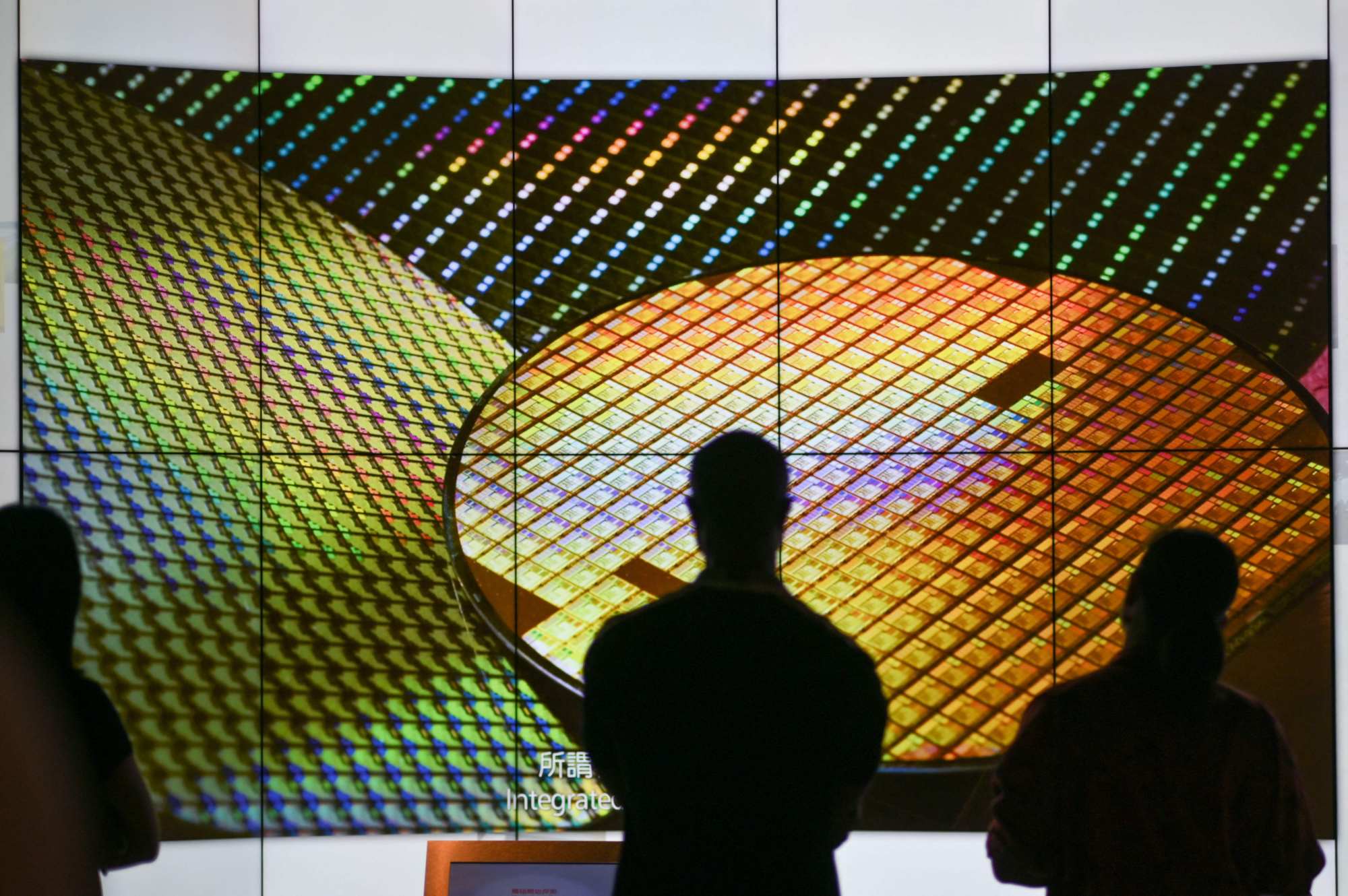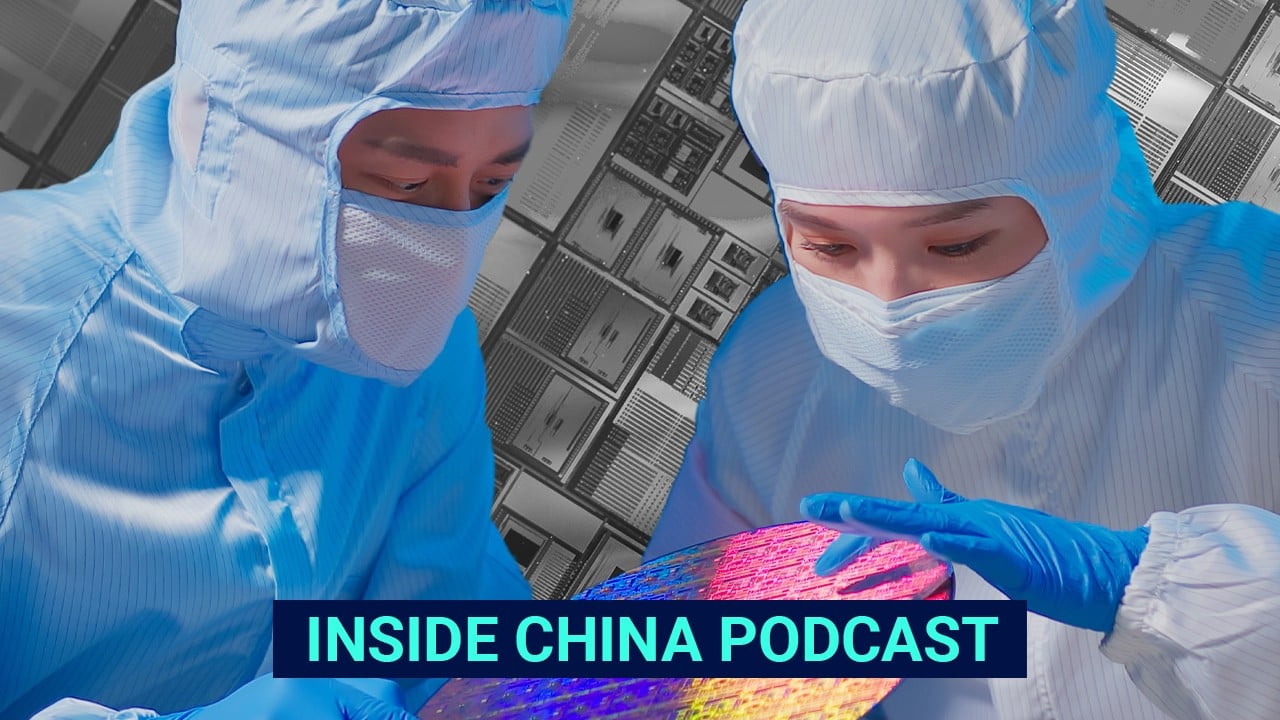
Revolutionising the semiconductor industry: Chinese scientists unveil 12-inch wafer with groundbreaking 2D materials
- Researchers have managed to produce new 12-inch wafers that are just one atom thick and have low production costs
- Work still needs to be done to transform them into a usable chip but scientists expect they will eventually complement silicon chips
In an exclusive interview with the Post, Professor Liu Kaihui of Peking University, who was the lead scientist on the project, said his team’s work had given assurance to the industry of the practical applications of the 2D material.
In collaboration with Professor Liu Can at Renmin University of China and Professor Zhang Guangyu at the Chinese Academy of Sciences, his team developed the manufacturing strategy in Beijing and verified it at Songshan Lake Materials Laboratory, Dongguan. They published a paper of their findings in the peer-reviewed journal Science Bulletin on July 30.
Though silicon is well-suited for semiconductor processing, current silicon chips have met difficulties as device sizes continue to decrease.
“When silicon transistors are made thinner, their control of voltage becomes worse. Current will exist even when the device is not working. This brings extra energy costs and heat generation,” Liu said.
The 2D material consists of crystalline solids with one to several layers of atoms. The wafers’ unique physical properties, due to their naturally atomic-level thickness, could solve the problem. And there could be applications in many high-performance electronic devices.
US-China tech war hinges on who gains semiconductor dominance
“A transistor built from a single layer of MoS2, [a typical 2D material] with a thickness of about one nanometre, outperforms the one made with the same thickness of silicon many times,” Liu said.
This has led to a shift in focus towards 2D materials.
At each layer, 2D materials can exist separately, allowing them to be stacked layer by layer, like graphene or transition metal dichalcogenides (TMDs), including molybdenum disulfide, tungsten disulfide, molybdenum diselenide and tungsten diselenide.
However, fabrication of 2D material wafers with high uniformity and device performance has been a challenge to scientists around the world.

Just as with traditional semiconductors, the challenge of industrialising the 2D technology first lies in fabricating wafers.
Traditionally, wafers are typically grown in a furnace using a method called point-to-surface, where the demand sources are provided in powder through a nozzle above. This works well when the wafer is tiny. But as the size increases, the diffusion of the sources becomes less even in the furnace and leads to a decline in the wafer’s quality.

“We developed a new approach, utilising a surface-to-surface supply method that ensures uniform growth,” PhD candidate Xue Guodong, first author of the paper, said. “While fabricating the MoS2 wafer, a chalcogenide crystal plate (ZnS) cooperating with solution-dispersed molten salts (Na2MoO4) is used as an element source,” he said.
Liu added that the new method means there are no longer limitations in the size of the wafers.
“The strategy ensures feedstocks are provided evenly and sufficiently in the furnace and solves the previous limitation in wafer size. We can also make larger ones, but 12-inch is the most commonly used size,” Liu said.
Once the size problem was solved, the team had to create a strategy for batch production. The proposed growth system is modularised and then packed into a pillar, like building a skyscraper. Because the gaps between the floors are filled with demand sources, the wafer grows very uniformly.
This stacking method means multiple layers of 2D materials can be grown simultaneously, leading to unparalleled efficiency and low production costs.
“Our engineering team at Songshan Lake Materials Laboratory designed equipment based on this method. Now our equipment can now produce 10,000 pieces of 2D wafers per machine per year,” Liu said.
While the wafers have been successfully fabricated, transforming them into usable chips still requires intricate design and engraving like photolithography and deposition. Yet, Liu is confident about the future.
“As the history of the semiconductor industry has shown, iteration is key, and some hurdles are likely to be overcome with industrial refinement,” he said.
“China is intensely focused on related technology research and development, with support from the National Natural Science Foundation of China. There is confidence in the industry that this new material will play a vital role in the future, but the timing of its adoption depends on when silicon’s limitations become a significant pain point.”



